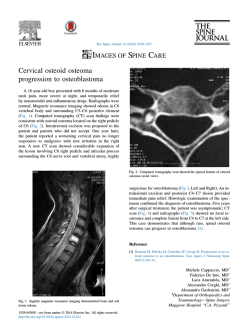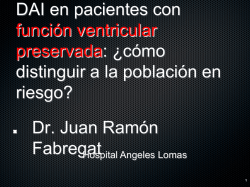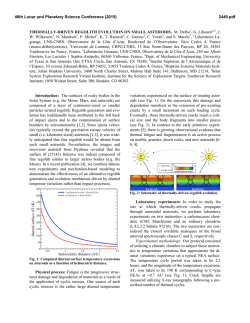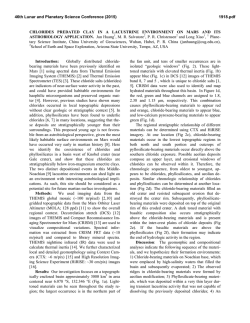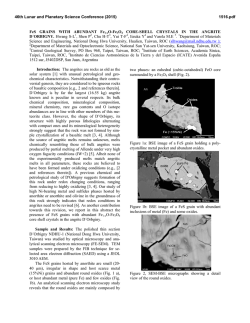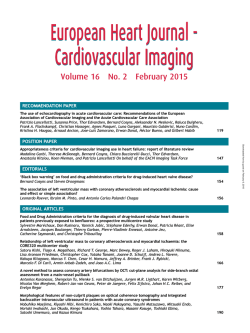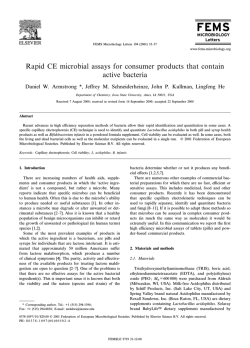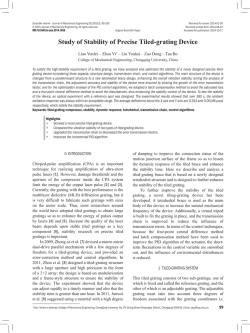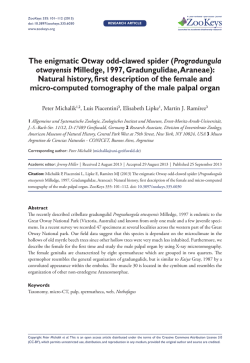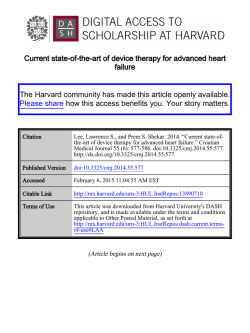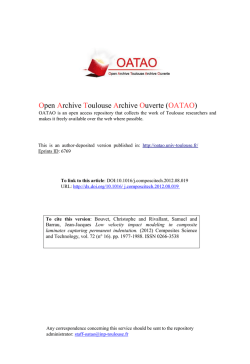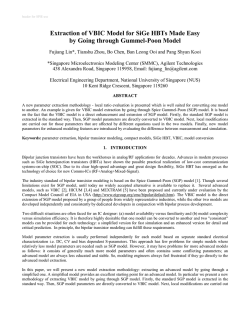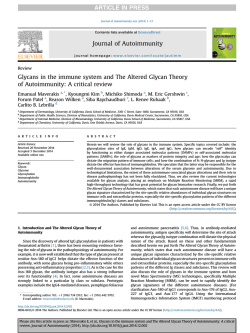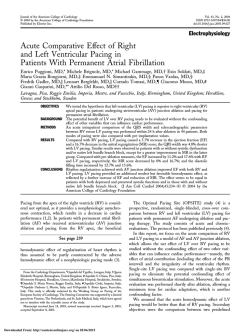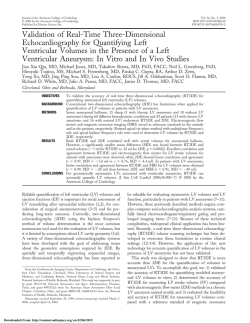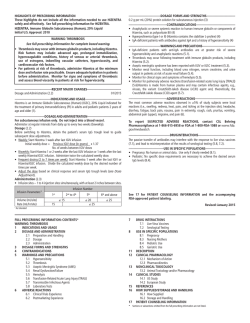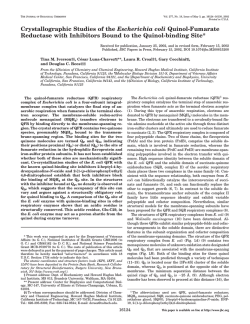
Download Supporting Information (PDF)
Supporting Information Yamaguchi et al. 10.1073/pnas.1417232112 SI Materials and Methods Media. MEC1 and primary epicardial cells were grown in DMEM with 10% (vol/vol) FBS and penicillin/streptomycin (Pen/Strep). Adipogenic media contained 1 μM dexamethasone (Sigma), 500 nM (mouse), or 500 μM (human) 3-isobutyl-1-methylxanthine (IBMX, Sigma), 10 μg/mL insulin (Sigma), 10 μM rosiglitazone (Cayman Chemical), and 10 μM palmitate (Cayman Chemical) in DMEM. Medium was changed every 3 d for 2 wk of differentiation. RT-PCR and qPCR. cDNA was synthesized from 100 to 500 ng of total RNA with Moloney murine leukemia virus reverse transcriptase (Invitrogen). PCR primers were: Gapdh, forward (F) CTCATGACCACAGTCCATGCC and reverse (R) AGGCCATGCCAGTGAGCTTC; Pparg, (F) TCTCTCCGTAATGGAAGACC and (R) GCATTATGAGACATCCCCAC; Ucp1, (F) ATCACCTTCCCGCTGGACA and (R) GGCAGACCGCTGTAGAGTTTC; Pgc1a, (F) GATTGGAGTTGAAAAAGCTTGACTG and (R) TCTGGGCAAAGAGGCTGGTC; Prdm16, (F) CCTGTCTACATTCCTGAAGACATTCC and (R) GTACTTGAGCCAGCTGCCAG; Cidea, (F) CTCATCAGGCCCCTGACATT and (R) CTCCAGCACCAGAGTAACC; Cidec, (F) ATTGGCTGCCTGAACGTGA and (R) GTGGCCTGCATGCTGAAGAG; and Fabp4, (F) CACTTTCCTTGTGGCAAAGC and (R) CTCACCTGGAAGACAGCTCC. Quantitative realtime PCR was performed in iQ SYBR Green Supermix (Bio-Rad) using a Roche LightCycler 480. Gapdh and Pparg primers were designed to amplify both human and mouse genes and confirmed to have equal amplification efficiency in the two species. Student’s t test was performed for statistical significance. Oil Red O Staining. A 0.5% Oil Red O stock solution was prepared in 100% isopropanol and filtered through a 0.2-μm filter. A working solution was prepared by mixing three volumes of stock solution and two volumes of water, letting stand for 10 min, and then filtering through a 0.2-μm filter. Cells and frozen tissue sections were fixed in 10% neutral buffered formalin for 30 min at room temperature, then washed with PBS three times for 5 min and 100% propylene glycol for 5 min. Samples were stained in the working solution at 65 °C for 8 min, washed with 85% propylene glycol for 5 min, rehydrated in running water for 15 min, then counterstained with hematoxylin for 5 min, and washed again in tap water. Tissue sections were mounted with aqueous mounting medium, and cells were kept in PBS for imaging. Yamaguchi et al. www.pnas.org/cgi/content/short/1417232112 Immunostaining. Harvested tissue was fixed in 4% paraformaldehyde at 4 °C overnight, cryoprotected in sucrose, and embedded in optimal cutting temperature compound (OCT). Eightmicrometer cryostat sections were fixed in 4% paraformaldehyde at room temperature for 10 min and then washed with PBS for 5 min. As needed, autofluorescence of myocardium was quenched in 0.03% Sudan Black B (in 70% ethanol) for 30 min at room temperature in the dark. After sections were rinsed in PBS, permeabilization was performed in 0.1% Triton X-100 for 30 min at room temperature, followed by PBS rinse and blocking in 5% BSA. Tissue was incubated with primary antibodies overnight at 4 °C or 2 h at room temperature and then washed in PBS for 5 min three times. Tissue was incubated with secondary antibodies at room temperature for 1 h, washed with PBS for 5 min three times, and then mounted with mounting medium containing DAPI (Invitrogen). Primary antibodies were: rabbit anti-perilipin A (1:200, Abcam), goat anti-Fabp4 (10 μg/mL, R&D), rabbit antiFabp4 (1:200, Abcam), chicken anti-GFP (1:250, Aves Labs), hamster anti-mouse podoplanin (1:50, eBioscience), rat antimouse CD31 (PECAM) (1:100, BD Pharmingen), and goat antiSM22α (1:100, Abcam). Secondary antibodies were: Alexa Fluor 594 goat anti-rabbit IgG, Alexa Fluor 488 and 546 donkey anti-goat IgG, Alexa Fluor 488 goat anti-hamster IgG, Alexa Fluor 488 goat anti-rat IgG, and Alexa Fluor 488 goat anti-chicken IgY (all at 1:500, Invitrogen). For detection of PPARγ, tissue sections were fixed in ice-cold methanol for 10 min, blocked in 10% normal donkey serum, and washed in PBS with 0.1% Triton X-100. Signal was amplified using an unconjugated secondary antibody and a fluorophore-labeled tertiary antibody. Primary antibody was rabbit anti-PPARγ (1:200, Cell Signaling); secondary antibody was goat anti-rabbit IgG (1:400, Jackson ImmunoResearch); and tertiary antibody was Alexa Fluor 546 donkey anti-goat IgG (1:200, Invitrogen). Retroaortic Ink Injection. Hearts were removed from the thorax by excision at the aortic arch. India ink was injected retroaortically into the coronary vasculature via a hand-operated syringe with a 21-gauge needle. Excess ink was rinsed off in PBS, and tissue was fixed in 10% (vol/vol in PBS) neutral buffered formalin and processed for frozen sectioning. Ten-micrometer sections were stained with hematoxylin and eosin and mounted with xylenebased mounting medium for imaging. 1 of 4 Fig. S1. Species comparison of EAT. (A–O) Ventricular EAT is absent in mice and rats but present in several nonrodent adult mammals. Specimens were obtained from a 12-wk-old New Zealand white rabbit, an adult pig of unknown strain and unknown exact age from a local slaughterhouse, an elderly human cadaver for whom no clinical or identifying information is available, a 5-mo-old mouse, and a 12-wk-old Sprague-Dawley rat. Stereomicroscope views are of the left ventricular wall near or including the ventricular apex. B–N show the ventricular wall morphology in transverse sections with H&E staining; C–O show Oil Red O staining of sections from nearby but different areas of the hearts. (P) EAT is absent from the adult mouse ventricle even around coronary vessels; the boxed region in the H&E section (P) is shown at higher magnification in an adjacent section (P′) stained for SM22 (smooth muscle) but without detectable PLIN staining. (Q) EAT is present in the adult rat AV groove. Fig. S2. Confirmation of mouse AV groove fat as EAT. (A–C) An adult mouse heart was removed and retroaortically perfused with India ink. Ink is evident in small vessels that infiltrate through the AV groove fat tissue (B), and in coronary arteries that infiltrate the ventricle wall (C). Boxed areas in B and C are shown at higher magnification in B′ and C′. (D) Gene expression profile of EAT. EAT was isolated manually from a normal adult mouse and compared in gene expression to omental white fat (WAT) and intrascapular brown fat (BAT) from the same mouse. Yamaguchi et al. www.pnas.org/cgi/content/short/1417232112 2 of 4 Fig. S3. Recombination patterns of Tbx18Cre and Tie2Cre in adult mouse hearts. Adjacent sections were H&E stained (A and D) or immunostained for YFP (lineage marker) and PECAM1 (endothelial marker) (B, C, E, and F); the location of the immunostained images is indicated by boxes in the lower magnification adjacent H&E images. In addition to the epicardium and AV groove EAT (Fig. 1 G–I), Tbx18Cre recombination (green) is observed in AV valve mesenchyme (B), in ventricular and atrial (B and C) intramyocardial mesenchyme (presumptive fibroblasts), and in coronary vessel smooth muscle (C′), but not endocardium (B and C) or coronary (C′) endothelium (Endo, red). Tie2Cre recombination is evident in endocardium (E and F) and in coronary vessel endothelium (F′) (Endo, yellow) and in endocardium-derived mesenchyme (E, green), but not in epicardium (F, blue mesothelial lining). Fig. S4. In vitro epicardial adipogenesis assessed by Oil Red O staining. (A and B) Primary epicardial cells derived from embryonic AV groove explants do not differentiate in adipogenesis-inducing conditions. (C and D) MEC1 epicardial cells also do not undergo adipogenic differentiation. (E–H) Viral PPARγ expression in MEC1 cells promotes adipogenesis. The behavior of MEC1 cells (C, D, and E–H) is similar to primary embryonic epicardial cells (Fig. 2 B, D, and G–J). Fig. S5. Tbx18Cre/Pparg conditional mutant mice have normal levels and distribution of non-EAT visceral fat depots (A and E), including surrounding the kidney (B and F), gut (C and G), and female reproductive tract (D and H). Explanted tissue was stained with Oil Red O to visualize attached fat. Yamaguchi et al. www.pnas.org/cgi/content/short/1417232112 3 of 4 Fig. S6. Characterization of ventricular EAT. (A and B) Sections of control and Tbx18Cre/PPFP adult mice through the AV groove; The boxed regions in A and B are shown at higher magnification in A′ and B′; EAT is outlined. (C and D) Images of control and Tbx18Cre/PPFP adult mice that were not subject to cryoinjury; compare with Fig. 4 E and F. C′ and C″, and D′ and D″, are adjacent sections shown at high magnification and correspond to the boxed regions in C and D. No ventricular fat was observed in the absence of injury. (E and F) Sections through the heart of a genetic control cryoinjured mouse adjacent to the injury area indicates a small cluster of subepicardial adipocytes in the absence of forced PPARγ expression. This was a typical observation in injured control (either Tbx18Cre alone or PPFP alone) mice; quantitation is shown in Fig. 4G. The approximate location of the image in F is indicated by the boxed region in the nearby section E. (G–K) Ventricular EAT in adult Tbx18Cre/PPFP mice induced by adult heart cryoinjury (G–I) or embryonic exposure to rosiglitazone and a high fat diet (J and K) is surrounded by a podoplanin (PDPN)-positive epicardium. The strong green signal in the myocardium occurs because the PPFP allele expresses GFP in the absence of recombination and is fluorescent without immunodetection (i.e., with IgG control nonimmune antisera; G and J). PDPN immunostaining is detected specifically in the epicardium, overlying the induced PLIN+ EAT (H and K), which is also FABP4+ (I). Sections G–I are adjacent to or nearby each other from the same heart, as are J and K. Yamaguchi et al. www.pnas.org/cgi/content/short/1417232112 4 of 4
© Copyright 2026

